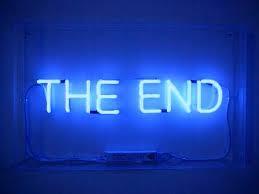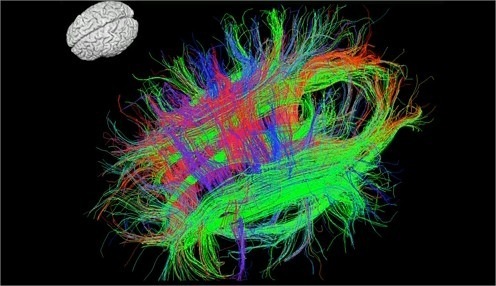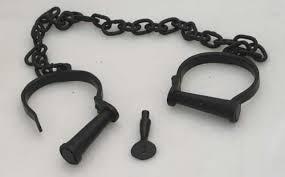Zackary Sholem Berger's Blog, page 29
October 22, 2012
The end of the physical? It depends what we want to get out of it
Here’s a great article about the physical exam, its historical roots, and why its benefits are not clear.

My reactions are manifold:
1. Not surprising. I’ve been telling people for years that there is no great evidence for *any* particular visit interval. My understanding: the “yearly visit” was invented by those great protectors of American health and welfare, the insurance companies.
2. The studies that show little effect of the annual physical, i.e. the ones which have gotten the most press recently, are measuring the wrong endpoint. Sometimes people like to see their doctor to maintain the relationship, so that the MD is there if they are needed.
3. Doctor-patient communication is not yet as good as it should be across the board. Nor is the visit optimized to get the most out of the relationship. When (if!) those improvements occur, we will move the needle on the next go-round of such systematic reviews.
October 15, 2012
Doctors that help people
I was chatting with someone who asked what I did for a living, and I told him I am a doctor. “The kind that helps people?” he joked.
I knew what he meant. The MD is the practical fixer, the PhD the omphalocentrist academic. Many believe in this dichotomy, as false as it is. And such a philosophy underlies the opposition to some elements of the PPACA, aka Obamacare.
There’s a board of experts, the Independent Payment Advisory Board, which is tasked to (per Wikpedia, which seems mostly accurate)
develop specific proposals to bring the net growth in Medicare spending back to target levels if the Medicare Actuary determines that net spending is forecast to exceed target levels, beginning in 2015.
According to official records, the proposals made by IPAB should not include any recommendation to ration health care, raise revenues or increase Medicare beneficiary premiums, increase Medicare beneficiary cost sharing (deductibles, coinsurance, or co-payments), or otherwise restrict benefits or modify eligibility criteria
The usual suspects have come out against the board: the AMA (that well known and long term opponent of health care reform, who came out for Obamacare only weakly), Big Pharma, the American Hospital Association. Though I discount most of their concerns out of hand, the AMA does make an interesting point – namely, that working physicians (not eligible per the legislation for board membership) should be included.
But why? The assumption is that only clinicians can know what really helps the individual patient, and bean-counters and economists care only about money.
This is false in so many ways! First, as I have repeated time and again in this space, sometimes doctors don’t know, know only some of what they think, or base a whole practice on precious little evidence.
Second, sometimes population health is the best guide to what is most likely to help the patient in front of you. In fact, most of evidence-based medicine is founded on controlled trials among thousands of people. Now, although these are imperfect at best, we do know something. Beta blockers help after heart attacks. In severe depression, SSRIs can improve matters. And so on.
The clinician is powerless without population health, profligate to no purpose without health economics, and stabbing in the dark without policy and health services research.
Is there a unique perspective that a physician can bring to such a board? Perhaps, but I worry that such a doctor would be the AMA’s (or the specialties’/the RUC’s) Trojan horse to sneak in unsubstantiated overuse. I, for one, accept that a board of experts, tasked with cost-cutting without affecting quality, does not need a token physician.
September 28, 2012
Extra Breath
How many things continue nearly forever.
Emerging from stellar quarries
elements are found in ore, then later
smelted into keys to every door there is.
Our sun will wink out
long after the word “extinguish”
brings a grimace of effort
to the student glossing English.
Joy is a dodging, weaving flame
floating on a pool of wax
in a lambent emanation
a slight warmth on the window pane.
September 27, 2012
Rolling around in the big opiate ball
He says, “You’re the doctor, Dr. B.“
I hate him for giving up. But I’ve given him the script.
He has pain which doesn’t let him rest—in his right testicle, for 30 years.
He is Mr. Dabney. A big black guy. A recovered alcoholic.
“What should I do, doc?” he asks. He wants them to take the testicle off. Maybe the nerve, too, since another doctor told him that’s where the pain is.
I have told him over and over again that chopping off his ball won’t make his pain go away. In my head I call it his ball. To him I call it his testicle. And then, maybe I think we should take his testicle off. To show him it wouldn’t work. That the pain would be worse. Then I’d be right.
More in the Journal of General Internal Medicine.
September 24, 2012
Health care decision-making and emotion: beyond cognitive bias
At Friday’s Medical Grand Rounds at Johns Hopkins, Jerome Groopman and Pamela Hartzband of Beth Israel Deaconess Medical Center and Harvard Medical School talked about what patients can do in their own interests when doctors disagree. Because doctors do disagree, they took pains to assure us, referring to the headlines of contemporary controversies: statins for primary prevention, to take one example; or prostate cancer screening – not to mention mammograms. Their talk was a short version of the argument in their book from last year.
Even if doctors do disagree, it wouldn’t be so complicated if we could just (just!) figure out what patients want. Once we had that settled, we could calculate the expected utility of each possible medical decision, maximize that utility, and go home satisfied.
Unfortunately, while health economists make much use of the quality-adjusted life year (QALY) as a way to incorporate supposed universal estimates of relative utility into medical decision-making, the assumptions that go with this are hard to swallow, as Groopman and Hartzband pointed out. First, our preferences are not static but dynamic. We might want one thing one day, and something completely different the next. That’s called “changing your mind.”
Second, people find it very hard to predict how they might react to situations in the future. You were in an awful accident and cannot use your legs. How many years of your current, completely healthy life would you trade off in order to avoid that existence? The very question assumes that the quality of a paraplegic’s life is substantially less. But people with chronic medical conditions realize that doctors, and healthy people, underestimate the quality of such a life (one example here).
Groopman and Hartzband’s talk, meant as an approach to such concerns, was well presented and thoughtful, but lacked a big piece of the puzzle. Their idea is this: every patient – actually, every human being, doctors included – operates in the framework of a limited number of “mindsets” when it comes to medical decision making: trusting medicine versus being doubtful of it; supporting technology versus preferring natural approaches; and wishing for maximalist versus minimalist interventions. These mindsets can help us figure out what patients really want, as opposed to the QALYs which some health economists find very useful and others (to quote Kahneman) compare to the ether beloved by physicisits in the 19th century: a poor approximation to the complicated facts of life, the variegated experiences of real patients.
The big piece I found missing goes under a name that is not beloved by today’s science and medicine writers: emotion. Where do these mindsets come from? Do they always apply? And – from a broader outlook – are we really able to lay every problem, disagreement, or complication in medical decision making at the feet of cognitive biases?
Biases explain quite a bit, but it seems intuitive – and accepted, even, by many scientists – that decision-making is bound up with emotion. It is popular to discuss medicine, and society in general, in cognitive terms. But not everything is cognitive or can be forced into the boxes of its science.
How do we understand our emotions – both those of physicians and patients – and how they affect medical decision making? Is it okay to rely on narrative, personal experience, fears, and suspicions when decisions have to be made? Are cognitive biases always bad, and is cognition the be-all and end-all of healtcare?
I am writing a book on this topic which will come out in 2013, but the short answer is No. Details forthcoming.
There was another missing piece in the Groopman and Hartzband lecture. They are right, of course, about doctors’ disagreements with regard to cancer screening – they are legion. At one point, however, they threw up their hands: every group of doctors has their own mindset. The USPSTF is minimalist, the urologists (say) maximalists about PSA testing. Everyone has their own cognitive bias and there’s no right answer.
This is true as far as it goes. Yes, there’s no universal answer to many deeply rooted medical controversies. But I firmly believe that there is a right answer for any given patient, according to her preferences, mindset, and – yes! – emotional needs in the context of the doctor-patient relationship.
Cognitive biases are not the answer; there is no one right answer, but emotion and communication can help us get closer to the variety of solutions necessary for the wide range of people and their medical problems.
September 16, 2012
Of parables and stereotypes in Jewish fiction
Tablet, the on-line magazine, recently published its first piece of original fiction. This is salutary, as there are not enough venues for fiction which is both (1) Jewish and (2) any good. (The same is true of poetry, but even more so.) The story itself illuminates the strengths and weaknesses of the slippery beast that is Jewish fiction.
It’s a parable, as any reader can see, since “the doctor” and “the rabbi” are referred to only that way, as archetypes. Even more, this particular parable hearkens back to an old Jewish literary trope: it’s a tale of a tzaddik confronting the skeptic. (The clever writing clues us in by winking at the tropes: the rabbi tugs not at a beard but at her braid.)
This is both the saving grace and the Achilles heel of the tale. Because it is a parable, one can forgive the predictable ending – the doctor becomes less skeptic – because it is subtly rendered with considerable eloquence. On the other hand, when characters depart hardly at all from type, we begin to chafe under the hand of stereotype: of course the rabbi is calm and wise, while the doctor is imprisoned by his realistic assumptions.
The greater disappointment – although was I expecting too much from a short story? – is that the writer, who possesses an elegant style and an active mind, chose not to dip into the exciting complications of history, where we see doctor-rabbi encounters which change both parties and question long-held assumptions. Or, if Jewish history is not the writer’s chosen inspiration, then perhaps the tales of Nachman of Bratslav, who was both famously skeptical of and a regular visitor to doctors.
In short: it’s a lovely story, but limited by the characters, who are developed only as fully as their archetypes allow. Another kind of story might look to the long, wary experience of rabbis and doctors with each other, as drawn out and multifarious as modernity and Jewish literature itself.
September 15, 2012
A doctor’s new year wish
This coming year, may my patients be happy and safe. Let me solve their problems without adding to them. May my wisdom exceed my learning and my compassion increase with the number of complaints.
September 10, 2012
When the protocol is a straitjacket: inflexibility in medical care
Recently I learned about a pregnancy in which the woman was having frequent painful contractions. Only after her eventual delivery was it clear that she had developed a “uterine window,” where the scar from a previous C-sectio was almost worn through. The woman was told, after her Caesarian, that this was the case: there had been a significant risk of uterine rupture.
But why then was she not delivered earlier? Because, answered the doctor, there are risks to the baby from preterm delivery.
In that case, what was the balance between the risk of uterine rupture on the one hand and the risk of preterm delivery on the other? No one seemed to consider this tradeoff, or at any rate discuss it with this woman. She kept reporting her contractions; she was reassured and pain relief was provided; but preterm delivery was never considered, as if 39 Weeks were carved somewhere in marble.
Such hidebound protocolism is the norm across medicine. The blood pressure must be lower than 140 over 90, because…, well, because guidelines! The hemoglobin A1C must be lower than 7 because the American Diabetes Association said so, because…they are the experts!
Of course, those who recommend these cutoffs are experts. But that does not mean there are never any countervailing concerns or other possible routes. Is there a way to flip the protocol switch to “flexible” in doctors heads?
September 3, 2012
Publisher’s Lunch: Labor Day edition
FICTION
Debut
Mabel Dreadnought’s SEVENTEEN NOTEBOOKS, about a family secret, the running of the bulls at Pamplona, and the family’s melon farm in the sweaty convulsions of the 1905 Russo-Japanese war, to Amazon Gargantua, by Sammy Tuxedo at You Are There Media Group.
Thriller
NYT bestselling authors Steven R. Qing and John Ghrishame collaborate on TWO TENTS, the next installment in their series featuring Lakota Goldberg, a Native American detective of Jewish descent, or, depending when the holidays fall in the workweek, the other way around.
Women’s/Romance
USA Today bestseller Melanie Greatheart’s SOARING HOPES, PLUNGING ZIPPERS, an erotic e-book, to a major publisher who should be ashamed of itself. Please call your grandmother, major publisher.
NONFICTION
Biography
Jonah Lehrer’s biography of Bob Dylan, for publication in 2015, regarding the reclusive star’s mind-reading superpowers and direct genetic link to the Komodo dragon. As Dylan said to Lehrer, “HUNNNNGGGH!”
Business/Investing/Finance
Wall Street Journal bestseller and director of marketing for Ryan Smith, Inc., Ryan Smith presents a money-making philosophy that has touched lives around the world in his BORN RICH: HOW INHERITING A FORTUNE MAKES FORTUNE SMILE UPON YOU, to Richard Thalers at Bonds and Sense Publishing.
History/Politics/Current Affairs
Seamus Romney talks about the harrowing voyage that has shocked Americans in his HOSED ON THE ROAD: MY GASTROINTESTINAL AND AUTOMOTIVE NIGHTMARE, to Gail Collins Press, for publication on the eve of Election Day.
Memoir
Jonah Lehrer’s untitled memoir, featuring the rags-to-riches of a scientist who wrote too much and the high-pressure ways of America’s media hungry culture, with the collaboration of Robert Zimmerman, to Write it Again Sam Press for publication next Tuesday.
August 27, 2012
Reasons the doctor might be talking down to you
After a talk I gave about doctor-patient communication, a woman in her 30s raised her hand and said, “I work at a university, and whenever I see the doctor, he assumes I’m a student, and he talks down to me. This makes me very unhappy and I’m not sure what to do about that.” I assumed from her circumstances, and from the tone of her question, that she was not free to choose another doctor. What should be done by someone who has this problem? There are various strategies, but part of the answer is to understand why the doctor might be talking down to someone.
1. The doctor’s personality is unsuited to an egalitarian interaction. If they were a chimneysweep there would be the same problem.
2. The doctor was not trained to appreciate the importance of doctor-patient communication.
3. The doctor does not know what to recommend, or recognizes, perhaps subconsciously, that there is no good evidence to prefer one route of treatment over another. This leads to a basic conflict: she wants to help the patient but also acknowledges to herself that there is no one convincing path. Since she has been conditioned to present a front of omniscience to patients, both through the system and the influence of colleagues, she is not allowed to present that ignorance, or to partner with the patient to address it. Thus, she appears abrupt or condescending.
Perhaps I am giving such a doctor too much slack? I would do the same for a patient. Systematic changes mean we should, on occasion, refrain from blaming people without considering the entire differential.



